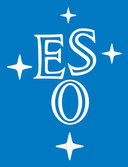Current service activities

 VO Solar System Portal
2008-now
VO Solar System Portal
2008-now
I actively participate to the development of the online services (ephemeris and databases) of the Virtual Observatory Solar System Portal (VOSSP). The VOSSP is a national observation services (SNO) of the National Institute for Universe Sciences (INSU). The service is co-led by J. Berthier (IMCCE) and myself (OCA). My contributions are mainly focused on the properties of small bodies (e.g., SsODNet, Berthier et al. 2023) and and tools to support users (e.g., ViSiON, Carry et al. 2018).
 Euclid Solar System Science Working Group
2018-now
Euclid Solar System Science Working Group
2018-now
I am the chairman of the Solar System Science Working Group that we created within the Euclid consortium based on my initial assessment of the interest of Euclid for Solar System studies (Carry 1018). We have built a series of tools to simulate SSO signal in Euclid images, and to detect them (e.g., Pöntinen et al. 2020). We also studied the synergies with Vera C. Rubin LSST (Rhodes et al. 2017, Snodgrass et al. 2018). We are working to release SSO observations with Euclid Data Releases.
 Gaia Follow-Up Network of Solar System Objets
2013-now
Gaia Follow-Up Network of Solar System Objets
2013-now
I am the responsible of the DU459, which is the development unit within ESA Gaia DPAC in charge of the dissemination of alerts on newly discovered solar system objects.
Our activities consist in organizing a network of observers and providing them with predicted position of discoveries. For that, we organized three workshops in Paris in 2010, 2012, and 2014. In parallel, we developed an automated pipeline to ingest data from Gaia, and to provide a convenient access to observers. From the observations of the network, we revealed a biais against high inclinaison asteroids in current census (Carry et al. 2021).
 VOS4O: VO Solar System Scaling Service for Outreach
2021
VOS4O: VO Solar System Scaling Service for Outreach
2021
A recurring request by amateurs, teachers, has always been "How can I scale the Solar System in my [school/garden/...]?".
It is a simple table of proportionality, yet, I could not find a satisfying (ergonomic) solution online. With J. Berthier and Y. Gominet (IMCCE), we thus decided to build VOS4O, a VO Web service, providing both the scaling and the relative positions.
See the article (Carry et al. 2021) presenting the service in CAP journal and a big thanks to all those who translated the service!
Past achievements
 Solar System Open Database Network
2022
Solar System Open Database Network
2022
In September 2022 we released the Solar System Open Database Network (SsODNet), a major compilation of data on SSO, with an identification service (quaero), a compilation of 192 millions of properties from over 3000 articles (dataCloud), and their best estimates for each SSO (ssoCard) and the entire population (BFT). All the data is accessible with a simple Web form or using our rocks python package (see Berthier et al. 2023 for details).
 Visibility Service for Observing Nights
2018
Visibility Service for Observing Nights
2018
Planning for observations can be tedious, especially for moving objects over long periods of time: their changing coordinates requiring multiple call to usual tools for night planning.
In 2018, we released the Visibility Service for Observing Nights (ViSiON), aiming at helping observer to plan their nights of observations. From a list of targets and dates, ViSiON predicts the observability of targets from a ground-based observatory and produce handy plots (Carry & Berthier 2018).
 Extension of SkyBoT to space missions
2016
Extension of SkyBoT to space missions
2016
During my research fellowship at ESA, we initiated the development of an extension of the VO service SkyBoT to use it to identify Solar System Object in images taken from space missions. We first integrated the ESA Rosetta mission, searching for serendipitious observations of asteroids by the OSIRIS camera (Carry et al., 2012). In support to the Kepler/K2 community, we recently released this SkyBoT extension, with both ESA Rosetta and NASA Kepler missions available. (Berthier et al., 2016).

 ESO Phase II for Solar System Objects
2015
ESO Phase II for Solar System Objects
2015
Together with J. Berthier (IMCCE), we built a customized output to the VO service Miriade to be directly fed into ESO VLT software P2PP for the observation of moving objects. This output can be generated with the option --pafParams, or using a dedicated web form, hosted on both ESO's and IMCCE's web pages (Carry & Berthier, 2016, see the ESO announcement). You can also download the form sources here.
 Ephemeris: Thermal flux of asteroids
2014
Ephemeris: Thermal flux of asteroids
2014
Together with J. Berthier (IMCCE) and M. Delbo (OCA), supported by the VO Paris Data Centre of the Paris observatory, we have integrated the NEATM thermal model (Harris, 1998) into the IMCCE/Eproc ephemeris software. Thermally emitted flux can be computed for any asteroid, at any epoch, any wavelength using the VO service Miriade with the option --thermalFlux (Example).











